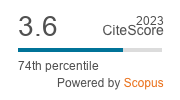Article | Open Access
Industrial Heritage and Pathways for Cultural-Creative Development in Bamberg, Germany
| Views: | 1015 | | | Downloads: | 470 |
Abstract: This article contributes to the ongoing authorized heritage discourse, following recent heritage concepts such as open heritage, and examines the industrial heritage and pathways for cultural-creative development in the city of Bamberg, Germany. Bamberg is a UNESCO World Heritage Site, but not on account of its industrial heritage, although some former industrial sites are located within the borders of the current World Heritage Site. We describe three adaptively reused sites that have slightly differing forms of protected status (listed building and ensemble) and show that authorized listing helps to ensure the survival of buildings and material structures over time as documents of an industrial past. However, other industrial sites need the engagement of locals, and refer to what Laurajane Smith describes as heritage as a cultural process. Diverse concepts and cultural-creative developments are evident in the reuse of industrial sites in Bamberg, but these contribute little to urban development strategies. When industrial heritage assets feature in the city’s development strategy, they are seemingly leveraged to drive real estate projects, such as at the former Erba textile site. Additionally, the Otto-Friedrich University (through its Am Zwinger building), and an engaged bottom-up initiative to reuse a former boiler house, enable slightly different development pathways—knowledge-based versus art-based, respectively. The university has a long-term perspective and promising impulses for heritage uses, whereas the Kunstraum (Art House) initiative still struggles to secure support for its medium-term prospects. We argue that the industrial heritage sites need authorized support and agency through engagement, to ensure long-term perspectives for cultural-creative uses.
Keywords: art; Bamberg; industrial heritage; reuse path dependency; UNESCO World Heritage; university
Published:
© Heike Oevermann, Even Smith Wergeland, Susanne Hanika. This is an open access article distributed under the terms of the Creative Commons Attribution 4.0 license (http://creativecommons.org/licenses/by/4.0), which permits any use, distribution, and reproduction of the work without further permission provided the original author(s) and source are credited.




